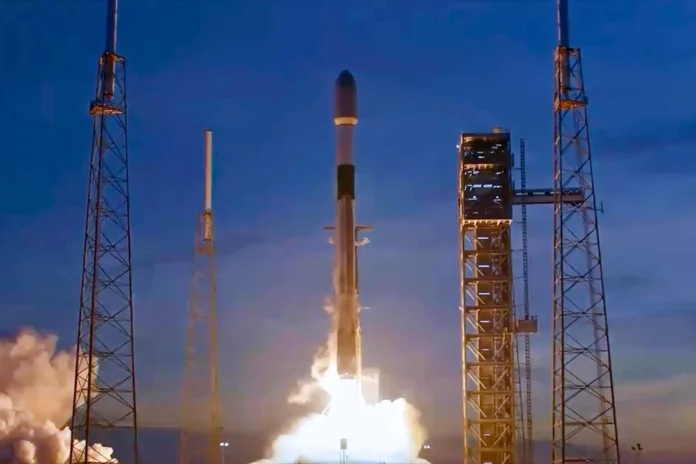In a move that further expands its ambitious Starlink internet network, SpaceX launched 23 more Starlink satellites from Florida on Sunday, May 12, 2024. This launch signifies a major milestone for the company, bringing the total number of operational Starlink satellites to around 5,900. This ever-growing constellation is a cornerstone of SpaceX’s plan to deliver high-speed internet access to users worldwide, with a particular focus on closing the digital divide in underserved and remote regions.
Falcon 9 Lifts Off Starlink Satellites from Florida
On May 13, at precisely 8:53 PM EDT (00:53 GMT), a Falcon 9 rocket carrying the Starlink satellite lifted off from Cape Canaveral Space Force Station in Florida. After launching, the Falcon 9’s first stage operated completely, finishing its climb and coming back to Earth to land successfully eight minutes later on the droneship “A Shortfall of Gravitas” that was positioned in the Atlantic Ocean. According to a SpaceX mission description, this successful landing was the 15th time that the same Falcon 9 booster had returned to Earth. Furthermore, nine of its fourteen flights have been focused on Starlink missions, demonstrating the cost-effectiveness and reusability of SpaceX’s launch vehicles.
After separating from the first stage, the upper stage of the Falcon 9 proceeded to launch the 23 Starlink satellites into low Earth orbit (LEO), where they were intended to land. The upper stage deployed the satellites and placed them perfectly within their operational orbit about sixty-five minutes after launch. With this launch, SpaceX will have completed 49 orbital missions in 2024, firmly establishing its dominance in the commercial space sector. What’s even more amazing is that 33 of these launches have been committed to growing the Starlink constellation, demonstrating SpaceX’s dedication to creating a worldwide internet infrastructure.
Read More! SpaceX to Launch First ‘Starlink Direct to Cell’ Satellites
Starlink Mega Constellation
The goal of the Starlink mega constellation is to give people all around the world access to high-speed internet, with an emphasis on underserved and remote locations. With the launch of these 23 Starlink satellites from Florida, SpaceX is getting closer to realizing its bold promise to cover the entire planet with dependable internet access. With almost 6,000 satellites in service and more scheduled launches, SpaceX is expected to dramatically increase internet availability in the upcoming years. With a chance to completely change how we interact and receive information on a global scale, the Starlink constellation’s ongoing development and deployment will be widely monitored.



